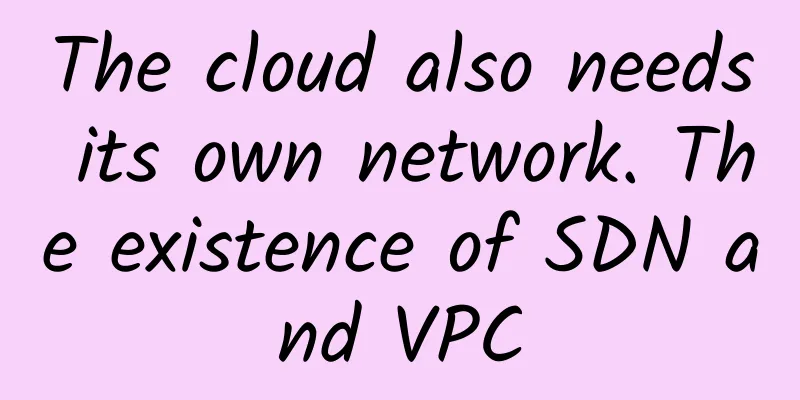OSI seven-layer and TCP five-layer protocols, why TCP/IP protocol wins

|
1. OSI Reference Model 1. Origin of OSI First of all, what is the OSI seven-layer model? OSI is the abbreviation of Open System Interconnection in English. It is translated into Chinese as (Open System Interconnection Reference Model). It is a standard system developed by an international standardization organization for interconnection between computer or communication systems. How to understand it? You can think of it this way. A long time ago, there were various manufacturers of computer hardware and network equipment in the world. Everyone did their own thing, which was very messy and incompatible with each other. At that time, there was a very powerful and recognized organization in the world. In order to unify the Internet, make it less complicated and easier to manage, it formulated a rule, and everyone must abide by this rule. This is the OSI seven-layer model. 2. What do the seven layers mean? First of all, this seven-layer model is a virtual one, that is, a theoretical rule, not a tangible physical shape like a car model. So what does it look like? Look at the picture below. [This is purely hand-typed, to preach for the teacher. I don't seek great achievements, but I hope to help everyone. In my spare time, I will share some work experience and various technical resource articles with everyone, hoping to help everyone make progress together. I also hope that my releases will be helpful to you. There are more similar articles in my releases that you can check out. If you like them, please follow me. Thank you. Your attention is the biggest motivation for me to keep releasing.] 3. What are these two seven-layer models? First, you should think of the seven-layer model on both sides as two people writing letters. If you write to someone, does he have to write back to you? This is the arrow in the middle of the two models. It means that there is a back and forth. The letters between you two have to go through these seven steps before they can reach each other. This is why the seven-layer model is drawn on both sides. 4. What are the basic functions of the OSI seven-layer model? The OSI model uses a seven-layered structure model to enable reliable communication between different systems and networks. Therefore, its most important function is to help realize data transmission between different types of hosts. 5. So what do these seven layers correspond to? (1) Physical layer: It corresponds to network cards, network cables, optical fibers, etc. (2) Data link layer: It corresponds to bridges, switches, etc. (3) Network layer: routers, layer 3 switches (4) Transport layer, session layer, presentation layer, application layer, these are at the software level and virtual level, so they do not correspond to related physical devices. These four levels correspond to related protocols. For example: the transport layer has: TCP UDP protocol; the application layer has http ftp protocol, etc., that's what it means However, the actual network management requires daily maintenance of only five layers: physical layer, data link layer, network layer, and application layer. 6. Definition of each layer’s functions Here we only give a general explanation of the functions of each OSI layer, without going into detail, because each layer is actually a complex layer. Let’s take a brief look at it here. We start from the top layer - the application layer. The whole process is explained using the example of a commercial quotation sent between Company A and Company B. (1) Application layer The layer closest to the user in the OSI reference model provides application interfaces for computer users and also directly provides users with various network services. Our common application layer network service protocols are: HTTP, HTTPS, FTP, POP3, SMTP, etc. In fact, the boss of Company A is the user we are talking about, and the commercial quotation he wants to send is a network service provided by the application layer. Of course, the boss can also choose other services, such as sending a commercial contract, sending an inquiry, and so on. (2) Presentation Layer The presentation layer provides various encoding and conversion functions for application layer data, ensuring that the data sent by the application layer of one system can be recognized by the application layer of another system. If necessary, this layer provides a standard representation for converting the various data formats within the computer into a standard representation used in communications. Data compression and encryption are also one of the transformation functions that the presentation layer can provide. Since Company A and Company B are from different countries, they have agreed to use English as the language of communication. Therefore, the presentation layer (the company's secretary) is responsible for translating the information transmitted by the application layer into English. At the same time, in order to prevent other companies from seeing it, people from Company A will also encrypt the quotation. This is the role of representation, converting and translating data at the application layer. (3) Session layer The session layer is responsible for establishing, managing, and terminating communication sessions between presentation layer entities. Communication at this layer consists of service requests and responses between applications in different devices. The colleagues at the session layer get the converted data from the colleagues at the presentation layer (the colleagues at the session layer are similar to the external relations department of the company). The colleagues at the session layer may have the contact information of the company and many other companies. Here, the company is the entity in the actual transmission process. They need to manage the contact sessions between the company and many external companies. After receiving the data from the presentation layer, the session layer will establish and record this session. He will first find the address information of Company B, then put the entire document into an envelope and write the address and contact information. Prepare to mail the document. Once it is confirmed that Company B has received the quotation, the conversation is over and the colleagues in the External Relations Department will terminate the conversation. (4) Transport layer The transport layer establishes an end-to-end link between hosts. The role of the transport layer is to provide end-to-end reliable and transparent data transmission services for upper-layer protocols, including handling issues such as error control and flow control. This layer shields the details of lower-layer data communications from higher layers, so that high-level users only see a host-to-host, reliable data path between two transmission entities that can be controlled and set by the user. We usually say that TCP UDP is at this layer. The port number is the "end" here. The transport layer is equivalent to the person in the company who is responsible for sending and receiving express mail, the company's own deliveryman, who is responsible for delivering the information to be sent from the upper layer to the express company or post office. (5) Network layer This layer establishes a connection between two nodes through IP addressing, selects appropriate routing and switching nodes for packets sent by the transport layer at the source end, and transmits them to the transport layer at the destination end correctly according to the address. It is commonly referred to as the IP layer. This layer is what we often call the IP protocol layer. The IP protocol is the foundation of the Internet. The network layer is equivalent to the express delivery company's huge express delivery network, with different distribution centers across the country. For example, SF Express from Shenzhen to Beijing (for land transportation, it seems that air transportation can fly directly to Beijing) must first go to SF Express's Shenzhen distribution center, then be sent from the Shenzhen distribution center to the Wuhan distribution center, and then from the Wuhan distribution center to the Beijing Shunyi distribution center. Each distribution center is equivalent to an IP node in the network. (6) Data Link Layer It combines bits into bytes, and bytes into frames, uses link layer addresses (Ethernet uses MAC addresses) to access the medium, and performs error detection. The data link layer is divided into two sublayers: logical link control sublayer (LLC) and media access control sublayer (MAC). The MAC sublayer handles the CSMA/CD algorithm, data error checking, framing, etc.; the LLC sublayer defines some fields that enable the previous protocol to share the data link layer. In actual use, the LLC sublayer is not necessary. (7) Physical layer The actual transmission of the final signal is achieved through the physical layer. Transmits a bit stream over a physical medium. Specifies voltage levels, speeds, and cable pinouts. Commonly used equipment includes (various physical devices) hubs, repeaters, modems, network cables, twisted pair cables, and coaxial cables. These are the transmission media at the physical layer. The means of transportation used in the express delivery process are equivalent to our physical layer, such as cars, trains, planes, and ships. 7. Communication characteristics: peer-to-peer communication Peer-to-peer communication: In order for data packets to be transmitted from the source to the destination, each layer of the OSI model at the source end must communicate with the peer layer at the destination end. This type of communication is called peer-to-peer communication. During the communication process at each layer, the layer's own protocol is used for communication. 2. TCP/IP five-layer model The correspondence between the TCP/IP five-layer protocol and the OSI seven-layer protocol is as follows: Different devices work at each layer. For example, the switches we commonly use work at the data link layer, and general routers work at the network layer. The protocols implemented at each layer are also different, that is, the services at each layer are also different. The following figure lists the main protocols at each layer. 1. Application layer The application layer provides services to applications. These services are grouped according to the characteristics they provide to applications and are called service elements. Some are used by multiple applications, while others are used by a smaller class of applications. The application layer is the highest layer and directly provides services for the application process. Its function is to complete a series of services required for business processing while enabling multiple system application processes to communicate with each other. Its service elements are divided into two categories: common application service elements CASE and specific application service elements SASE. CASE provides the most basic services. It becomes the user of any user and any service element in the application layer, and mainly provides basic control mechanisms for application process communication and distributed system implementation. Specific service SASE needs to meet some specific services, such as document transmission, access management, job transmission, banking transactions, order entry, etc. These will involve virtual terminals, job transfer and operation, file transfer and access management, remote database access, graphics core systems, open systems interconnection management, etc. The application layer standards include DP8649 "Common Application Service Elements", DP8650 "Common Application Service Elements Protocol", file transfer, access and management services and protocols. 2. Transport layer The transport layer is the first end-to-end layer when two computers communicate data over a network and has a buffering effect. When the network layer service quality cannot meet the requirements, it will improve the service to meet the requirements of the higher layer; when the network layer service quality is good, it only needs to do very little work. The transport layer can also perform multiplexing, which is to create multiple logical connections on one network connection. The transport layer, also known as the transport layer, is a very important layer. Because it is the last layer that controls data transmission from source to destination from low to high. It is an established fact that there are great differences in performance among various communication subnets in the world. For example, telephone switching networks, packet switching networks, public data switching networks, local area networks and other communication subnets can be interconnected, but the throughput, transmission rate, data delay and communication costs they provide are different. For the session layer, an interface with constant performance is required. The transport layer takes on this function. It uses splitting/merging, multiplexing/demultiplexing technology to adjust the differences of the above communication subnets so that the session layer cannot feel it. In addition, the transport layer must also have functions such as error recovery and flow control to shield the session layer from the details and differences of the communication subnets in these aspects. The data objects faced by the transport layer are no longer network addresses and host addresses, but interface ports with the session layer. The ultimate goal of the above functions is to provide reliable and error-free data transmission for the session. The service of the transport layer generally goes through three stages: transport connection establishment stage, data transmission stage, and transport connection release stage to complete a complete service process. The data transmission stage is divided into general data transmission and accelerated data transmission. 3. Network layer The emergence of the network layer is also the result of network development. In the context of online systems and circuit switching, the functions of the network layer do not make much sense. As the number of data terminals increases, they are connected by relay devices. At this time, there will be a situation where a terminal requires to communicate not only with a single terminal but with multiple terminals. This is where the problem of linking the data of any two data terminal devices arises, which is routing or path finding. In addition, after a physical channel is established and used by a pair of users, a lot of idle time is often wasted. People naturally want to let multiple pairs of users share one link. To solve this problem, logical channel technology and virtual circuit technology emerged. In order to establish network connections and provide services to upper layers, the network layer should have the following main functions: · Routing and relaying. Activate and terminate network connection. Multiplex multiple network connections on one data link, often using time-division multiplexing technology. · Error detection and recovery. · Sorting, flow control. Service selection. Network management. 4. Data Link Layer A data link can be roughly understood as a data channel. The physical layer provides transmission media and connections for data communication between terminal devices. Media is long-lived and connections have a lifespan. During the lifetime of a connection, the sending and receiving ends can perform data communication one or more times. Each communication must go through two processes: establishing communication contact and dismantling communication contact. This established data sending and receiving relationship is called a data link. However, data transmitted on physical media is inevitably affected by various unreliable factors and may cause errors. In order to make up for the deficiencies in the physical layer and provide error-free data transmission for the upper layer, it is necessary to be able to detect and correct errors in the data. The establishment and dismantling of data links, as well as error detection and correction of data are the basic tasks of the data link layer. The main function of the link layer: The link layer provides data transmission services for the network layer, and this service depends on the functions of this layer. · Establishment, removal, and separation of link connections. Frame delimitation and frame synchronization. The data transmission unit of the link layer is the frame. The length and interface of the frame vary depending on the protocol, but the frame must be delimited anyway. Sequence control, which controls the order in which frames are sent and received. · Error detection and recovery. There are also link identification, flow control, etc. Error detection often uses square code check and cyclic code check to detect bit errors in data on the channel, while frame loss and other conditions are detected using sequence number detection. Recovery from various errors is often accomplished through feedback retransmission technology. 5. Physical layer Although the physical layer is at the bottom layer, it is the foundation of the entire computer network. The physical layer provides transmission media and interconnection equipment for data communication between devices, and provides a reliable environment for data transmission. The media of the physical layer include overhead wires, balanced cables, optical fibers, wireless channels, etc. The interconnection equipment used for communication refers to the interconnection equipment between DTE and DCE. DTE stands for data terminal equipment, also known as physical equipment, including computers, terminals, etc. DCE is data communication equipment or circuit connection equipment, such as a modem. Data transmission usually goes through the path of DTE-DCE and then DCE-DTE. Interconnection equipment refers to the devices that connect DTE and DCE, such as various plugs and sockets. Various thick and thin coaxial cables, T-connectors, plugs, receivers, transmitters, repeaters, etc. in the LAN are all media and connectors at the physical layer. The main functions of the physical layer are: (1) Provide a data transmission path for data terminal devices. The data path can be a single physical medium or a connection of multiple physical media. A complete data transmission includes activating the physical connection, transmitting data, and terminating the physical connection. Activation means that no matter how many physical media are involved, they must be connected between the two communicating data terminal devices to form a channel. (2) To transmit data, the physical layer must form an entity suitable for data transmission needs and serve data transmission. The first is to ensure that data can pass through it correctly, and the second is to provide sufficient bandwidth (bandwidth refers to the number of bits that can pass through per second) to reduce congestion on the channel. The data transmission method can meet the needs of point-to-point, point-to-multipoint, serial or parallel, half-duplex or full-duplex, synchronous or asynchronous transmission. 3. TCP/IP Basics 1. The specific meaning of TCP/IP In a literal sense, some people may think that TCP/IP refers to the two protocols TCP and IP. In real life, sometimes it does refer to these two protocols. However, in many cases, it is just a general term for the protocol group that must be used when using IP for communication. Specifically, IP or ICMP, TCP or UDP, TELNET or FTP, and HTTP are all TCP/IP protocols. They are closely related to TCP or IP and are an indispensable part of the Internet. The term TCP/IP refers to these protocols in general, so TCP/IP is sometimes called the Internet Protocol Group. When the Internet communicates, a corresponding network protocol is required. TCP/IP is a protocol family originally developed for the use of the Internet. Therefore, the Internet protocol is TCP/IP, and TCP/IP is the Internet protocol. Internet Protocol Suite 2. Data Packet Packet, frame, data packet, segment, message The above five terms are all used to express the units of data, which can be roughly divided into the following categories:
In each layer, a header is added to the data to be sent. This header contains the necessary information for that layer, such as the destination address and protocol-related information. Usually, the information provided to the protocol is the packet header, and the content to be sent is the data. From the perspective of the next layer, all packets received from the previous layer are considered to be data of this layer. Packet header The data packets transmitted in the network are composed of two parts: one is the header used by the protocol, and the other is the data transmitted from the upper layer. The structure of the header is defined in detail by the specific specifications of the protocol. In the header of the data packet, it is clearly indicated how the protocol should read the data. Conversely, by seeing the header, you can understand the necessary information of the protocol and the data to be processed. The packet header is like the face of the protocol. 3. Data processing flow The following figure takes user a sending an email to user b as an example: Data processing flow ① Application Processing
② TCP module processing
③ Processing of IP modules
④ Network interface (Ethernet driver) processing
⑤ Network interface (Ethernet driver) processing
⑥ Processing of IP modules
⑦ TCP module processing
⑧ Application Processing The receiving application will directly receive the data sent by the sending end, parse the data, and display the corresponding content. 4. TCP and UDP in the transport layer There are two representative transport layer protocols in TCP/IP, namely TCP and UDP.
1. Port number The addresses in data links and IP refer to MAC addresses and IP addresses respectively. The former is used to identify different computers in the same link, and the latter is used to identify interconnected hosts and routers in a TCP/IP network. There is also a concept similar to addresses in the transport layer, which is the port number. The port number is used to identify different applications communicating in the same computer. Therefore, it is also called a program address. 1.1 Identify applications by port number Multiple programs can run on a computer at the same time. The transport layer protocol uses these port numbers to identify the applications that are communicating on the local machine and accurately transmit data. Identify applications by port number 1.2 Communication identification by IP address, port number, and protocol number
Communication identification through port number, IP address, and protocol number
1.3 Determination of port number
1.4 Port Number and Protocol The port number is determined by the transport layer protocol it uses. Therefore, different transport layer protocols can use the same port number. In addition, those well-known port numbers have nothing to do with the transport layer protocol. As long as the port is the same, the same application will be assigned to handle it. 2. UDP UDP does not provide complex control mechanisms and uses IP to provide connectionless communication services.
3. TCP
3.1 Three-way handshake (key points)
Let's take a look at the flowchart of the three-way handshake: Three-way handshake
3.2 Four waves (key points)
Let's take a look at the flowchart of four waves: Four waves
The above is a case where one party actively closes and the other party passively closes. In practice, there are also cases where both parties initiate active closures at the same time. The specific process is as follows: Wave at the same time 3.3 Improving reliability through sequence numbers and confirmation responses
The sequence number is a number that is assigned to each byte (8-bit byte) of the sent data in order. The receiving end queries the sequence number and the length of the data in the TCP header of the received data, and sends back the sequence number that it should receive next as a confirmation response. Through the sequence number and confirmation response number, TCP can identify whether the data has been received and whether it needs to be received, thereby achieving reliable transmission. Sequence Number and Confirmation Response 3.4 Determination of retransmission timeout
3.5 Sending Data in Segments
3.6 Using Window Control to Improve Speed
·
3.7 Sliding window control Sliding Window
3.8 Retransmission control in window control In the use window control, packet loss is generally divided into two situations:
Partial confirmation response is lost
|
<<: Linux TCP/IP protocol stack, data sending and receiving process, TCP protocol characteristics
>>: Is 5G really invincible? The sixth generation of Wi-Fi disagrees
Recommend
With blockchain, data center data security will be higher
Traditional data centers cannot always meet the n...
iONcloud 10% off in April, San Jose/Los Angeles/Honolulu/Dallas data centers
iONcloud is a cloud hosting platform established ...
Teach you how to accurately calculate the I2C pull-up resistor value
[[438676]] How many devices can be connected to t...
Deep sea battle: Cloud computing companies are strongly involved in laying submarine optical cables
I was thinking of writing about this topic by acc...
How to Improve the Security of Wireless Routers
As we all know, the security of wireless routers ...
How 5G will improve hyper-connectivity in smart cities
[[343220]] 5G is the next big thing in the techno...
A400 20% off for the school season, Los Angeles CN2 GIA/9929/4837 and other routes starting from 20 yuan/month
A400 Interconnect recently released a back-to-sch...
Top 10 Network Monitoring Software and Visibility Tools
If you need to understand what's happening on...
The strength of the WiFi signal is related to this core factor. Don't get it wrong.
When buying a wireless router, you should buy one...
MWC19 Shanghai | Open decoupling, the next generation evolution of operator networks
[[268794]] With the promotion and application of ...
Why did Facebook insist on changing its name when it was clearly taboo? Two reasons for the change
Facebook changed its name to Meta, causing its st...
ADX application delivery ensures your business continuity and improves your access experience
The purpose of IT informatization is to improve t...
When infrastructure fails, how does Agora SD-RTN ensure high availability of RTE services?
The emergence of cloud computing has brought grea...
Why is 5G slow to spread? In addition to being expensive, it is also because of the existence of this 4G package
Time flies, and the promotion of 5G has been goin...
GigsGigsCloud: Los Angeles CN2 GIA+CUVIP line KVM quarterly payment starts from US$18
GigsGigsCloud is a Malaysian hosting company foun...









